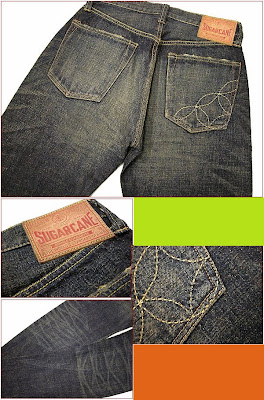Japanese Denim. . . .Get a Pair!
Posted by rpgadmin on Aug 25th 2010
The not so latest fashion craze for me these days is Japanese Denim. In doing my research for a client I discovered a few unique and interesting facts about this fabric: One is that it’s pricey and two, it’s really pricey! However, there must be something to this trend that so many people in the industry keep talking about it. I dug a little deeper.
Japanese culture is famous for its attention to detail, and jeans are no exception. Japanese denim has a cult following in Europe and America because of its amazing look and feel. It’s different because it uses traditional production techniques that have long been abandoned elsewhere. Though far more labor-intensive — and expensive — the jeans produced this way have a feel and appearance that is second to none.
Evisu was one of the first Japanese denim labels to become famous outside of Japan in the early ‘90s. The brand’s founder, Hidehiko Yamane, was a self-confessed “jeans otaku” and bought vintage Levi’s looms to produce his artisanal denim. Other brands use similar production methods to achieve a cloth that is stiffer, denser and yet far more comfortable than the mass-produced denim used overseas.
One of the most distinctive characteristics of classic Japanese jeans is their “selvage edge,” meaning that the fabric edges have a woven finish rather than being cut and over locked like ordinary jeans. The selvage can be seen on the outer leg seam when cuffs are rolled up — a detail that will be noticed by denim connoisseurs and is a sign of the fabric’s superior quality. Another factor in this quality is the dye used for Japanese denim: natural rather than synthetic indigo, with yarn dipped up to 30 times to produce an incredibly deep and rich color that weathers with time.
The reputation of Japanese denim has traveled quickly, and several overseas brands have adopted it for their collections. Cult Swedish brand Nudie uses Japanese denim for all its lines, and Diesel uses it for some of its premium jeans in response to demand for heavy, dense denim from shoppers. Paul Smith’s Red Ear label uses Japanese denim and also styling details and stitching inspired by Japanese streetwear.
Like their manufacturers, Japanese consumers are also sticklers for detail, and the jeans worn on the streets of Tokyo reflect this. This season, three main trends are emerging in men’s denim: skinny cut, embellishment and distressed wash. The skinny cut can be seen all over the city, usually in a dark wash and worn long enough to bunch around the ankles. Favored styles include 45rpm’s Sorehiko and Studio d’Artisan’s SD-103XX.
Embellishment takes many forms, from embroidery to chains and elaborate stitching. Evisu jeans are famous for their seagull mark across the back, which constantly morphs into new colors and sizes. This year, pocket-sized squiggles are the most popular, combined with colored tabs and studs. Dark wash has been popular for several seasons, but it is now being challenged by faded, distressed denim which can be seen everywhere on the streets of Shibuya, Tokyo’s youth center. From United Arrows, Eyefunny jeans are streaked with artfully applied paint and grime for a truly lived-in look right from the start. Edwin also provides a take on the look with frayed edges and fading through the legs.
In other cities jeans are seen as a fashion fallback that can be pulled on without thinking, but Tokyo’s trendsetters see denim as a matter for careful consideration, and they are willing to pay more for the perfect pair. And so, it seems, are a growing number of international denim fanatics who feed their habit through overseas stockists and eBay, and who swear that once you’ve tried Japanese denim you can never, ever go back.
Jim
The post Japanese Denim. . . .Get a Pair! appeared first on Arrowsmith Shoes.

